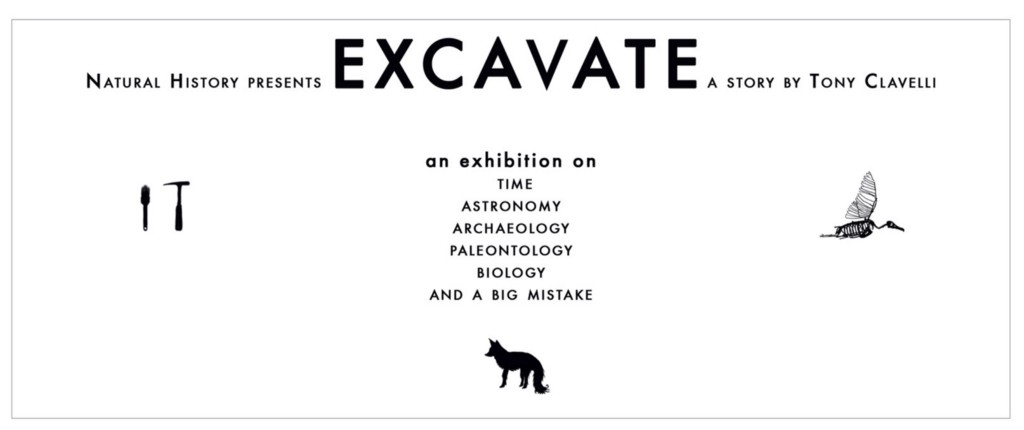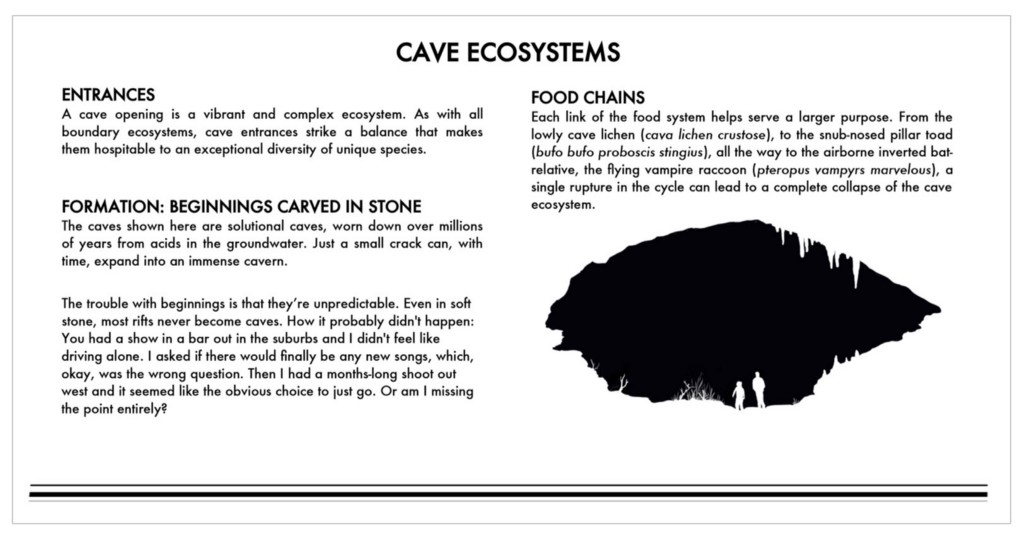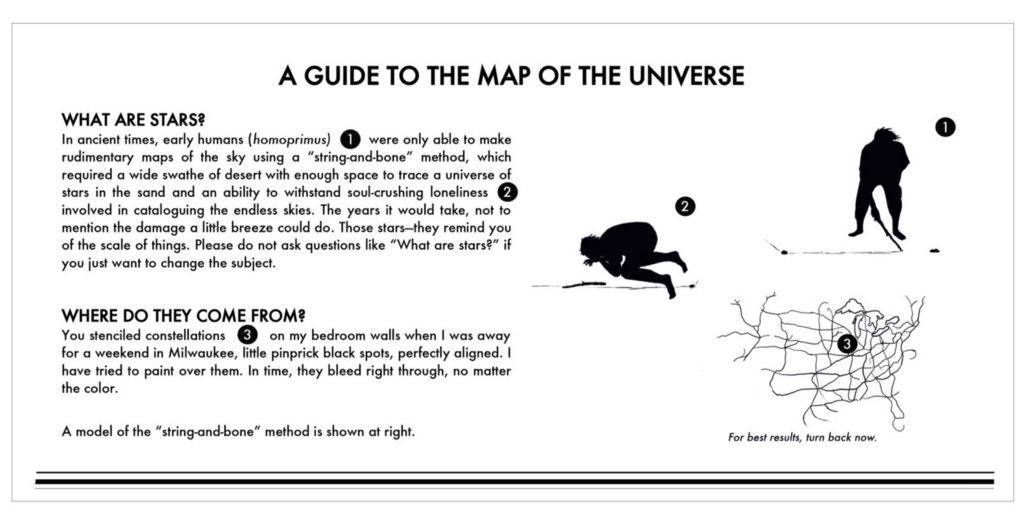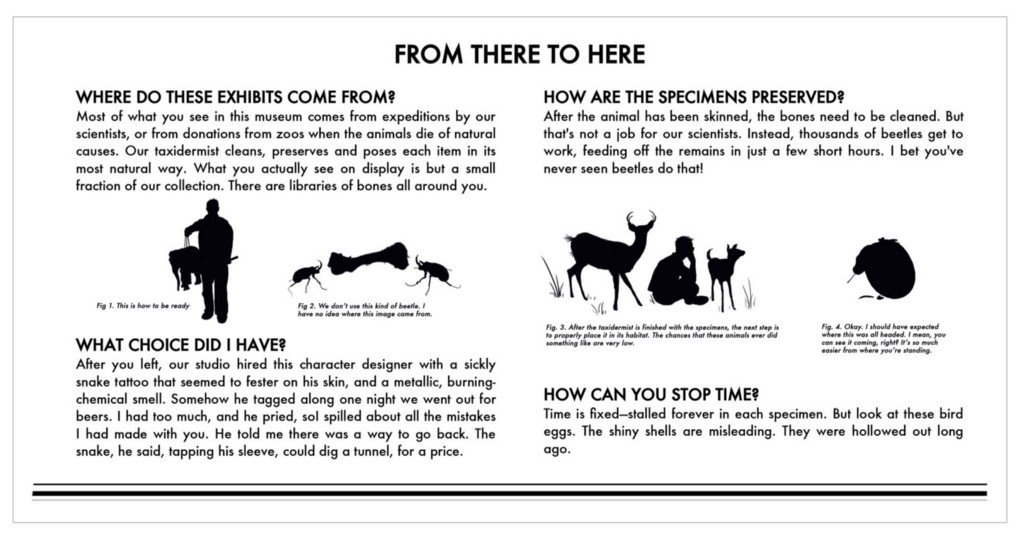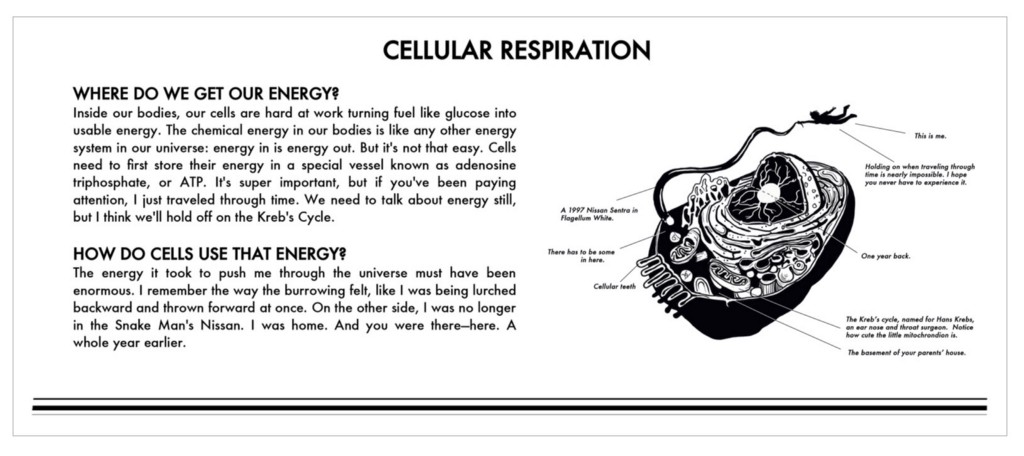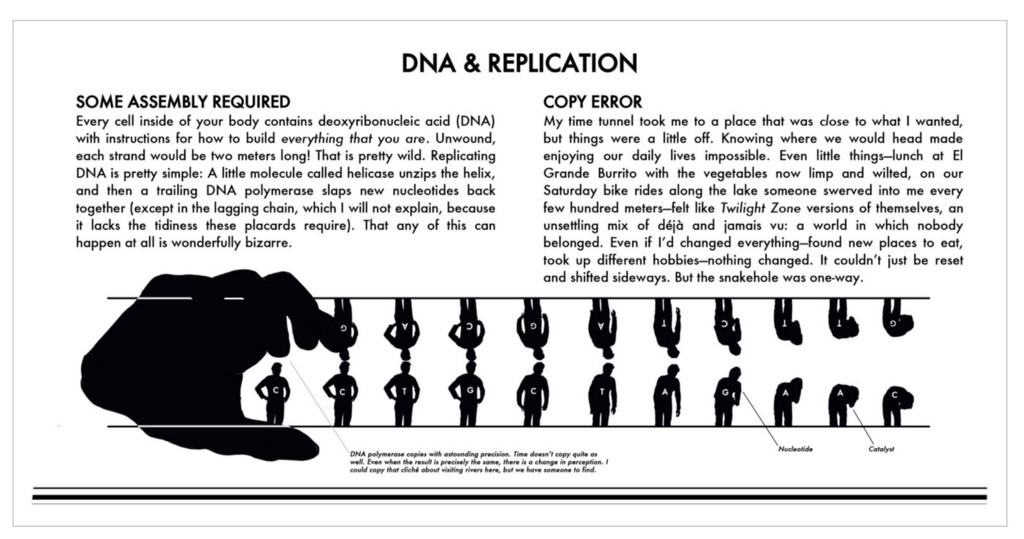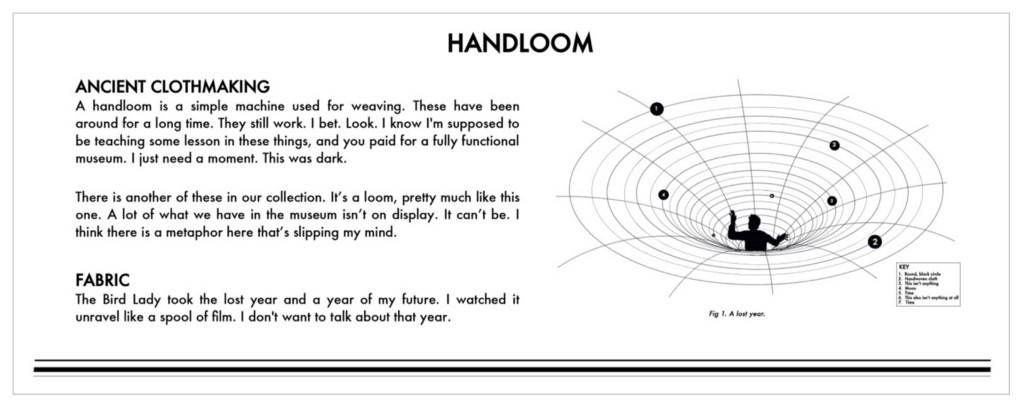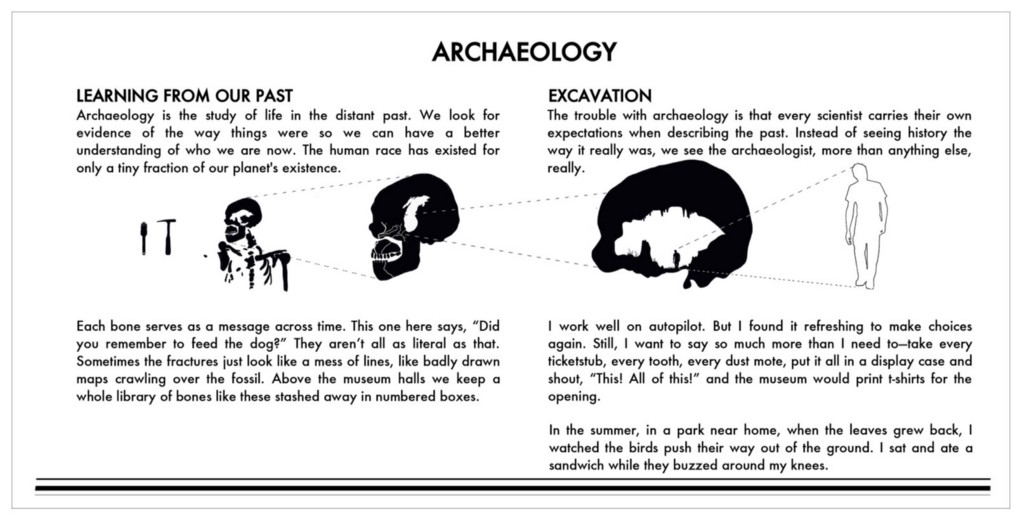Visibility in Suffering
by Akil Kumarasamy
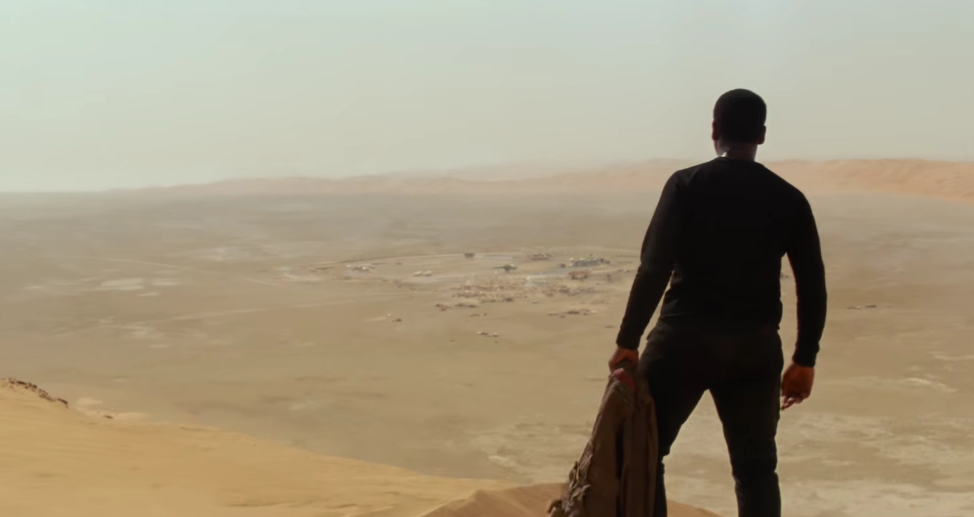
The other month, Viola Davis became the first black woman to win an Emmy for her leading role in How to Get Away with Murder. In her acceptance speech, she quoted Harriet Tubman to highlight the current conditions for actresses of color in Hollywood: “The only thing that separates women of color from everyone else is opportunity. You cannot win an Emmy for roles that are simply not there.”
Early on as a young Julliard graduate, Davis learned the scarcity of jobs available to her as a black woman and the discrepancy between how she saw herself — “kind of funky and hip and quirky and shy” — versus how the industry saw her, which was “strong, authoritative and not pretty at all.” Only after decades of working in theater and in supporting roles for Hollywood did she receive a platform as a fully complex lead; besides her eight-minute screen time in Doubt, for which she received an Oscar nomination, it was her role as a Mammy in The Help that gave her national prominence. She imbued life into a caricature, and that she needed to play this type of character in order to receive national attention speaks to the conditions that actors of color face. For an actor of color, the roles available are often marginal and limited, and inside the white-walled film industry, there are only so many seats available for anyone who is not willing to match the stereotypical, reductive narratives Hollywood offers.
Whiteness presumes its own universality; it speaks for everybody. This never needs to be explicitly stated because we don’t question why after a zombie apocalypse most of the lead characters are white or why, in horror films, only white characters survive. It’s non-white stories that need to prove their universality. Fresh Off the Boat is billed as a show about Asian-Americans but with universal appeal. Are there any shows labeled as white that make an appeal to their relatability? Through this narrow lens of universality, shows and films like Girls and Boyhood are lauded for their realism. Girls, which is set in New York City, follows in the footsteps of Sex and the City, Friends, and Seinfeld, in that people of color are largely absent except for stock roles as the maid, the taxi driver, token black significant others. (Most responded to criticism for lack of diversity the same way, by including token black significant others: Donald Glover as Lena’s boyfriend on Girls for an episode, Blair Underwood as Miranda’s short-term boyfriend in Sex and the City, and Gabrielle Union and Aisha Tyler had similar love triangles with Ross and Joey in Friends). Boyhood is filmed over the span of twelve years in West Texas; the process was designed to capture reality itself. Though it is impossible to move around West Texas without bumping into someone with Mexican descent, maybe it’s not surprising that there is not a single person of color in the film except for Roland Ruiz, who plays a plumber. Instead of focusing on the problematic nature of Linklater’s depiction of the region, most critics have celebrated the aesthetic and technical feat of capturing a family with such accuracy over time. Perhaps when most reviewers are white males, the overwhelming whiteness or the relatability of the boyhood of the protagonist is never a relevant issue.
Whitewashing is a further limitation for actors of color. In the recently released film, Stonewall, queer people of color are given marginal roles in the 1969 rebellion that helped launch the gay liberation movement; even though black and Latino transgender women like Marsha P. Johnson and Sylvia Rivera have been credited with starting the riots, Hollywood recast the pivotal moment of the first brick being thrown with a white Midwesterner from Indiana. According to NPR, the director, Roland Emmerich, “says he wanted a white, male protagonist to serve as a relatable surrogate for the audience.” In the New York Times review of the film, Stephen Holden calls the whitewashing as “tantamount to stealing history from people who made it.” Whitewashing is defended by the idea that aestheticism and merit should be transcendent of race. This logic allows films like “Stonewall” to be marketed as historical but with crucial details changed — because when people of color don’t exist in the present or the past, it is easy to judge who fits the role.
Even in science fiction, the suspension of belief doesn’t necessarily mean racial reimagining, and though actors of color have appeared in the genre, their casting has often been met with public outrage (Thresh and Rue in the The Hunger Games, Human Torch in Fantastic Four). In J.J. Abrams’ upcoming Star Wars: The Force Awakens, British-Nigerian actor, John Boyega, plays a leading role as a Stormtrooper who joins the Rebellion. After the release of the trailer, the hashtag “BoycottStarWars” started to trend, as users commented on the film promoting “white genocide,” as if the appearance of a few actors of color dilutes the predominantly white male production of the film. Using the logic of the one-drop rule, these extremist fans have called the film “anti-white.” Even in a desert planet in a galaxy far, far away, actors of color are fighting to exist in the future.
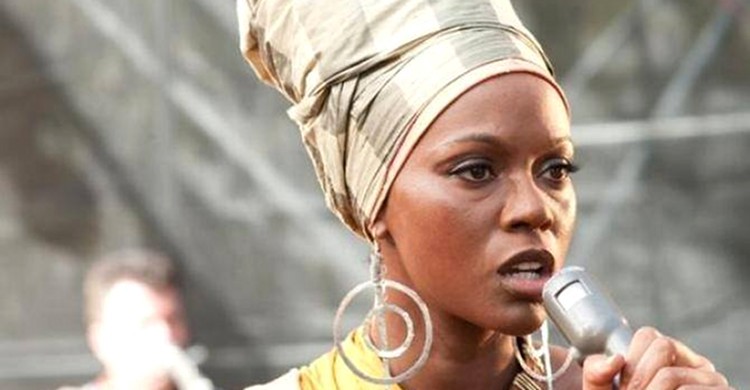
Zoe Saldana as Nina Simone
Even when Hollywood promotes a blockbuster film with a non-white lead, there are very few actors who have access to these roles — Will Smith, Denzel Washington, Halle Berry — and Hollywood’s homogenizing methodology doesn’t discern cultural nuances. With the vigorous competition for these few roles and the possibility of effective whitewashing, ethnicity becomes a vague category. In Selena, Jennifer Lopez plays the iconic Mexican-American singer, and maybe the fact she is a Puerto Rican-American woman shouldn’t matter, especially when Warner Bros. wanted to cast a non-Latina actress, but that means as a Mexican-American actress, even when a role might be perfect, you still don’t have a chance. Understandably, actors of color who already have visibility in the mainstream want to maintain their platform. For Hollywood, these select few become representatives for diversity; they are able to play lead roles outside the usual tropes for people of color, while the rest as Viola Davis pointed out on Oprah’s Next Chapter, are on “crisis mode” competing over a “piece of cheese.” Competition is the implicit consequence of the narrow and reductive roles available. What choice do actors of color have except to play the game and start running for a seat?
There is a myth that talent rises to the top regardless of barriers. In the case for acting, a role must exist in order for an actor to demonstrate his or her abilities. The question is how long must you wait for a role to come around that allows you to show the range of your skills — or will you die before you even have that chance? During the 2009 Screen Actors Guild awards, Meryl Streep, in reference to her Doubt co-star Viola Davis, called out from stage, “My God, somebody give her a movie.” For an actress as talented as Viola Davis to be overlooked for decades feels both devastating and familiar as the appeal by Meryl Streep is both urgent and inert. White actors are able to have full careers in the movie industry, receive lifetime achievement awards for a variety of roles they have played from their twenties to their seventies. But from the beginning what most actors of color have are slim pickings, a career built out of the hunger for work and just plain hunger.
The release of mainstream Hollywood films that feature leading black actors in expected roles like in The Help, The Butcher, 12 Years a Slave, grants many actors of color visibility, but reinforces how Hollywood permits mostly narratives of black suffering which rely on the crux of white kindness. In a more recent film, Selma, directed by an African-American woman, Ava DuVernay, focuses on Martin Luther King Jr. during a crucial moment of the Civil Rights Movement and pushes against national narratives about Martin Luther King Jr. and President Lyndon B. Johnson. DuVerney depicts a contentious relationship between the two men, specifically delineating the reluctance of President Johnson to pass voting rights legislation. Many critics have called DuVerney’s depiction of President Johnson as misleading. In writing about Selma for Time magazine, David Kaiser said, “Even in this one — and especially in this one — accuracy matters.” It is interesting that accuracy seems to matter most in narratives that push against white-savior depictions while whitewashing has become deeply entrenched in the American narrative. Meanwhile in television shows like Homeland, Muslim characters are interchangeable and dangerous, always within the mainstream narrative of them as terrorists, while the Middle East and South Asia are portrayed as no more than single set-pieces of despair and violence. (Artists were hired to paint Arabic graffiti to make the Berlin set more reminiscent of a Syrian refugee camp. They scrawled phrases like “Homeland is racist” and no one on set even noticed.) In the 2015 Oscars, a film like Selma, which did not align with popular opinion, received two Oscar nominations while American Sniper, an ode to American warfare, received six nominations, including for best lead actor (no actors of color received nominations).
The difficulty to garner critical acclaim makes it understandable why actors of color might accept transformative roles that might lead to an Emmy or Oscar, even if these roles might be best suited to others who more closely fit a character profile. In 2013, Zoe Saldana was cast as the actress to play Nina Simone in a biopic about the singer and activist that will be released later this year. For the film, she darkens her skin and wears a prosthetic nose, which further speaks to a narrative of white minstrelsy, and the effect makes one wonder what Nina Simone, who had spent her career championing against Hollywood’s standards of beauty, would have thought. In an interview with HipHollywood, Zoe Saldana responds to criticism of her casting and says she is playing this role for all her sisters. In essence, she is playing Hollywood’s representative rather than allowing a realistic representation, a concern white actors don’t need to face — they are never in danger of becoming representations of their ethnic/racial background. In this game of musical chairs, there are only so many seats available, and even if Zoe Saldana did want another sister to play the role, where would she be?
Beacon, "Preserve"
I saw a Salvation Army bell-ringer out on 14th Street yesterday. In Union Square they’re setting up the holiday market. The news is full of Black Friday stories. There is no denying it: We have entered the Festival of Dread. How long before you hear “The Most Wonderful Time Of The Year” in the Duane Reade? There’s no going back now. The only things we have to look forward to are the new Missy and the new Beacon, from which the above track comes. Enjoy.
New York City, November 11, 2015
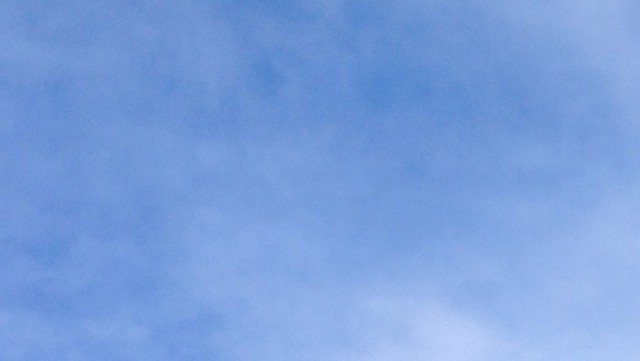
★★ The flat gray of the river looked a little whiter than the rumpled gray of the sky. The wood furniture and paneling on the new building’s roofdeck were dark with water. It took all morning and past lunchtime for some color and sun to work their way under the clouds. Suddenly the shadow of someone’s balcony gear to the south appeared on the apartment facade where it jutted out to the north. The near west turned blue, with more blue streaks opening in the clouds in the distance. A sweater and the wool coat were not wrong for the outdoors at first, but after a stuffy subway ride the coat had to come off, and in the office so did the sweater.
Vacancy Curbed
A photo posted by Pete Wang (@pwang1025) on Aug 1, 2015 at 8:57am PDT
The Real Deal reports that Vox Media “is in advanced discussions to sign a lease for more than 70,000 square feet at 85 Broad Street.” Vox Media’s New York headquarters, which houses much of its editorial, Vox Dot Com excepted, is currently in Midtown Manhattan. A move to the Financial District would have Vox following in the footsteps of Conde Nast, Time Inc., and News Corp., who have all fled Midtown for the austere-but-prosperous canyons of downtown, or announced plans to do so, adding another data point to the story that the “center of gravity” in New York media and dining has shifted southward.
If the deal goes through, Vox, a recent-but-proud member of the billion-dollar-valuation club, will be settling into the former headquarters of Goldman Sachs, a “brownish tower [that] isn’t interesting enough to be ugly,” according to the New York Observer:
Goldman Sachs became the world’s most important firm in a spectacularly dull, purposefully frumpy, desperately anonymous tower. Inside, it smelled like cigarettes in the 1980s and homemade chocolate chip cookies on the 30th floor. Babies cried in the first-floor day-care center; Jon Corzine worked outside in a Town Car parked on the curb after his ousting; and Hank Paulson felt sad when birds flew into the windows.
After being sold to MetLife and subsequently abandoned by Goldman in 2010 for a new headquarters at 200 West Street — which “appears to have been designed in the hope of rendering the company invisible” — 85 Broad Street was the home of the “largest vacant block of available space on the market,” which it couldn’t seem to fill until rather recently.
If Vox runs out of space again soon, it can always send employees down a few flights to the building’s new WeWork location.
A Theory of Technology

What follows are some passages of text from a piece about technology in the New York Review of Books.
Just as the market or the free play of competition provided in theory the optimum long-run solution for virtually every aspect of virtually every social and economic problem, so too does the free play of technology, according to its writers. Only if technology or innovation (or some other synonym) is allowed the freest possible reign, they believe, will the maximum social good be realized.
Technology, in their view, is a self-correcting system. Temporary oversight or “negative externalities” will and should be corrected by technological means. Attempts to restrict the free play of technological innovation are, in the nature of the case, self-defeating. Technological innovation exhibits a distinct tendency to work for the general welfare in the long run. Laissez innover!
The men and women who are elevated by technology into commanding positions within various decision-making bureaucracies exhibit no generalized drive for power such as characterized, say, the landed gentry of pre-industrial Europe or the capitalist entrepreneur of the last century. For their social and institutional position and its supporting culture as well are defined solely by the fact that these men are problem solvers. (Organized knowledge for practical purposes again.) That is, they gain advantage and reward only to the extent that they can bring specific technical knowledge to bear on the solution of specific technical problems. Any more general drive for power would undercut the bases of their usefulness and legitimacy.
Moreover their specific training and professional commitment to solving technical problems creates a bias against ideologies in general which inhibits any attempts to formulate a justifying ideology for the group. Consequently, they do not constitute a class and have no general interests antagonistic to those of their problem-beset clients.
What is important about technical language is that the words, being alien to ordinary speech, hide their meaning from ordinary speakers; terms like foreign aid or technical assistance have a good sound in ordinary speech; only the initiate recognizes them as synonyms for the old-fashioned, nasty word, imperialism. Such instances can be corrected but when almost all of the public’s business is carried on in specialized jargon correction makes little difference.
…technology in its very definition as the organization of knowledge for practical purposes assumes that the primary and really creative role in the social processes consequent on technological change is reserved for a scientific and technical elite, the elite which presumably discovers and organizes that knowledge. But if the scientific and technical elite and their indispensable managerial cronies are the really creative (and hardworking and altruistic) element in American society, what is this but to say that the common mass of men are essentially drags on the social weal?
The structures which formerly guaranteed the rule of wealth, age, and family will not be destroyed (or at least not totally so). They will be firmed up and rationalized by the perpetual addition of trained (and, of course, acculturated) talent. In technologically advanced societies, equality of opportunity functions as a hierarchical principle, in opposition to the egalitarian social goals it pretends to serve. To the extent that it has already become the kind of “equality” we seek to institute in our society, it is one of the main factors contributing to the widening gap between the cultures of upper and lower class America.
…technology is creating the basis for new and sharp class conflict in our society. That is, technology is creating its own working and managing classes just as earlier industrialization created its working and owning classes. Perhaps this suggests a return to the kind of class-based politics which characterized the US in the last quarter of the nineteenth century, rather than the somewhat more ambiguous politics which was a feature of the second quarter of this century. I am inclined to think that this is the case, though I confess the evidence for it is as yet inadequate.
This leads to a final hypothesis, namely that laissez innover should be frankly recognized as a conservative or right-wing ideology.
Would it surprise you to learn that the piece from which these passages are taken, with its discussions of free markets, technological meritocracy, benevolent tech services, class anxieties, and right-wing ideology masquerading as something else, all packaged into a tidy narrative, is not about Uber or venture capitalists or Silicon Valley at all? “Technology: The Opiate of the Intellectuals,” by John McDermott was published in New York Review of Books nearly fifty years ago, in 1969. Its primary concern was not apps or the sharing economy, but “the very frontier of American technology” at the time, the Vietnam War, where computers were being used to, among other things, decide on bombing targets with perfect rationality by calculating the probability of striking enemy or troops or supplies with the idea that “American lives are very expensive and American weapons and Vietnamese lives very cheap.”
The point of surfacing this piece is not to equate Uber’s logistical systems or Facebook’s social graph with computers that directed a war machine that took a number of lives because it was rationally calculated to be expedient, but to show how neatly these concerns from nearly fifty years ago — about a class of people permanently buoyed far above a new underclass by a deeply rational technological regime — map onto anxieties about the Valley and inequality today, down to the underlying political economy.
Which is all to say, if the State of Things makes you feel anxious, maybe you’re right to feel that way? And if you don’t, well, you’re obviously right to feel that way.
My Thinking Only Seems Magical Because Reality Has Not Been Sufficiently Optimized to Match It
“Uber is so obviously a good thing that you can measure how corrupt cities are by how hard they try to suppress it.”
As with the word “implicitly” in that first tweet, the word “obviously” serves here as a proxy for an entire unexamined worldview — the tip of a technocratic, Rand-ian ideological iceberg that regards what “works” (as defined first by engineering achievement and second by success in the market) as self-evidently correct. It’s a software engineer’s view of capitalism as a kind of genetic algorithm, gradually advancing society through a massively parallel search for product-market fit. Regulators, politicians, pearl-clutching social commentators and other unenlightened busy bodies who would seek to place limits on this process are bugs in the system, perverting its just course. Never mind that we’ve seen this algorithm operating at full efficiency before and found that, left unchecked, it tends to exhibit some problematic biases (toward income inequality, exploitation of labor, and disregard for public safety to name a few). Silicon Valley is different because unlike the robber barons of the last industrial revolution, the Titans of Silicon Valley are “smart” (a word used almost totemistically by Graham and his acolytes) and thus implicitly benevolent. The kind of haughty sentiment evinced by these two statements has long been a staple of tech’s response to criticism. In their reductive glibness, blinkered certainty, and “us-against-them” mentality they’re a prime example of what psychiatrist Robert Jay Lifton described in his book Thought Reform and the Psychology of Totalism as “thought-terminating cliches.”
Awl pal Buzz Andersen has a newsletter, and it is called Thinkpiece Dot Club.
How Do You Cook Fancy Local Food When There's Nothing to Cook?
by Alicia Kennedy
Romesco Chicken with creamy Risotto, almonds, rosemary and garlic. #PuertoRico #CLMDOmenu #CLMDO
A photo posted by CLMDO (@clmdo) on Oct 7, 2015 at 11:11am PDT
The Puerto Rican food supply is fragile: Eighty percent of it is imported, and pricing regulations generally favor imports over local goods. This is often lost in the discussion of its ongoing $72 billion debt crisis, rampant unemployment, and people leaving the island in droves for Florida or New York. Its native agriculture is being restored, but the pace is too slow to supply the island’s restaurants, while the Jones Act, enacted in 1917, still requires the U.S. territory to buy all imported goods from American-made ships staffed with American crews, severely limiting options and increasing costs.
Chef Wilson Davalos owns and operates the twenty-seat small-plate restaurant CLMDO in the west coast city of Isabela. He went from working in tech, to being a photographer, to moving back to Puerto Rico and teaching himself how to cook and opening the restaurant in 2014. CLMDO comes from the word “colmado,” which is what they call bodegas on the island. “My menu was changing weekly. One week a tagine, the next Portuguese codfish and potatoes,” he told me. He makes homey, refined food, like lemon chicken with red quinoa, chili eggplant with almonds, and creamy egg with butter-poached beets and feta. But right now, he’s still suffering the effects of food lost because of a cargo ship’s early October sinking in Hurricane Joaquin.
How do you usually stock the kitchen at CLMDO?
Shopping in Puerto Rico is difficult. From what I understand, only two percent of farmland in Puerto Rico is actually farmed. Tourists always ask me if the soil is bad; I say that it’s not. Monsanto has an R&D lab in Isabela.
Puerto Rico does not have many wholesale suppliers. And CLMDO, being such a small restaurant, I can’t buy in massive bulk from the ones that do exist. I use weekend markets, road-side sellers, small independent farms. I also have to use warehouse club stores like Costco and Sam’s Club.
Since my menu changes often, I’m able to adapt. Until last week, our entire menu was handwritten on butchers’ paper and hung on the wall. Fillet steak and spinach have been my biggest problems. My salads are spinach based; I’ve considered using Iceberg or Romaine lettuce, but even those were gone. I was able to find fresh spinach in small, less popular supermarkets, buying up every bag of spinach that I found.
What is the food availability like in Isabela? Is it worse than in San Juan, and how does it compare to the rest of the island?
Food diversity in the majority of the island, including Isabela, is not too dissimilar. You’ll see large stocks of soda crackers, rice, beans, plantains, and soft drinks in supermarkets. San Juan has much more food diversity. I remember once freaking out because I found fresh rosemary at a market in San Juan.
How long after this ship’s sinking did you begin to see and feel the effects?
Immediately. By the next week, greens started to disappear. Sam’s Club still has a sign posted saying that fruit, vegetables, meats, and baked goods are in low supply or not available because of the ship that sank. It’s shocking how fragile the food supply is in Puerto Rico. About six weeks have passed and I still find it hard to find something as simple as spinach.
How is the economic situation on the island affecting business outside of San Juan?
In my case, most of my customers are not locals. The majority of my clients are Puerto Ricans driving in from San Juan just to eat at CLMDO, then heading back to San Juan. The rest are tourists who have read about CLMDO while researching their trip. During the week, it can get pretty slow at CLMDO, then the weekend comes around and I have customers waiting out the door.
I see small local businesses struggling, especially mom-and-pop shops. Walmart is king in Puerto Rico. Walmart in Puerto Rico isn’t like it is in the States, where it’s your most affordable option. Outside of San Juan, it’s often your only option.
This past weekend, José Andrés hosted a culinary event with Eric Ripert, Anthony Bourdain, and Jose Enrique at a resort that cost $1,712 to attend. Does this kind of event have any real impact on day-to-day life?
Resorts in Puerto Rico are not like resorts in most of the world. They are not closed off. People who attended that event ended up in Isabela this past week. As for the culinary perception, rice, beans and mofongo are staples on most menus. Tourists might come to Puerto Rico expecting this, and quickly they’ll realize that the resort has a fancy version of rice and beans that the mostly locals restaurant down the street had too. By the time tourists hit my side of the island, they are surprised to not see mofongo or rice and beans on the menu.
The image of Puerto Rico in the U.S. is generally tourism and a crisis, with no in between. What would a more accurate picture look like?
We can’t hide from the crisis in Puerto Rico; it’s a reality. But commercial farming is starting to grow thanks to nonprofits like Hacienda la Esperanza in Manati, a former sugarcane plantation with some two thousand acres of land. They hold workshops on conservation, agriculture, urban farming and even lease farmland.
Farming in Puerto Rico is heavily taxed. Until last year, it was hard finding chickens raised in Puerto Rico in a supermarket. If you did, it would cost more than a chicken processed in Lancaster, Pennsylvania, and sent to Puerto Rico by cargoship. The current government changed some tax laws on chicken and egg production, and thanks to this change, we see more local chickens sold at markets. That is the change we need.
A Poem by Patrick Cotter
by Mark Bibbins, Editor
The Discoveries of Thomas Fynch
The noise of trees is mostly unheard by man
but trees are full of feeling like people
and leaves are their vocal cords.
So discovered Thomas Fynch
who became aficionado of rustles,
expert on the Aspen leaf’s white sonic poise;
who grew to know pine needles keened
before their boles were felled for coffins
and wrote of the chestnut’s clack-clack
when slapped by raindrops and the crackling
of underground fire amidst the ash tree’s rooted filigree.
He was born deaf, but his deafness was banished
when his infant body was passed by the village
healer through the cleft of a split juniper.
As the bush healed, the sound of the Earth
grew stronger in Thomas’s ears. Among
his discoveries: the melancholy cry
of the Serengeti acacia is addressed solely
to giraffes who hear the leaves say “eat me, eat me”
in clickety giraffe tongue; undersea forests of kelp
record in analogue on their ululating thalli
the songs of extinct whales replayed when caressed
by waters of a neap tide; graveyard yews draw up
through their roots the weeping of the dead
on All Souls’ Day; the protests of gust-ruffled oak leaves
can be silenced at night by piercing the bark
with a beloved’s toenails, clipped after a clamorous orgasm.
He plans to invent contraptions to help others to hear
what he and birds and insects hear, by combining
graphene nanowear with the ear nerves of bluebottles and finches
so even you can listen to the tulip summon the blackbird
when slugs attack or to the choral symphony
manuka blossoms sing to burrows of bumble bees.
Patrick Cotter has published several books including Perplexed Skin (Arlen House, 2008) and Making Music (Three Spires, 2009). He is a recipient of the Keats-Shelley Prize for Poetry. Other new work is about to appear in Poetry, Poetry Review and the Irish Times.
You will find more poems here. You may contact the editor at poems@theawl.com.
New York Mayor Now On Time Most Of The Time
“He has generally been on time in the past six months, is sometimes early and is rarely more than 20 minutes late for public and private events. He seems more aware of the clock. He sometimes reminds others around him to hurry and budgets more time for trips around the city. His team also schedules few events in the early morning.”

